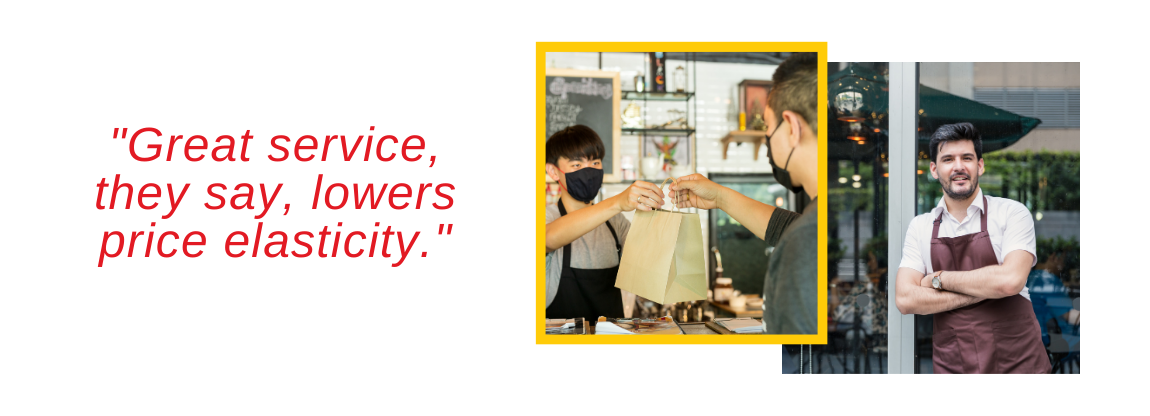Superior service: Great service lowers price elasticity
This year many businesses have had to make significant changes to how they market to their customers. While some businesses have enhanced their existing offerings, others have had to embark on a completely new model to stay competitive or even remain in business.
The restaurant scene was quick to pivot in response to COVID-19 restrictions in Australia, but this response varied across states. For example, many fine-dining restaurants in Sydney, accustomed to providing exceptional in-person experiences, switched their efforts to providing an outstanding in-home experience, delivering (or offering pick-up of) their signature dishes, along with matched wines. Porteño Restaurant in Sydney provided this service to customers during peak COVID-19 restriction months. This well-known restaurant is clearly appealing to its loyal client base, and providing this special service helps reinforce its highly respected reputation on the Sydney restaurant scene. Here service undoubtedly prevailed over price.
But providing superior service is not a new strategy.


In Chapter 11 of Grewal Marketing 3e the authors discuss how good marketing in the form of great customer service can make customers less sensitive to price. Great service, they say, lowers price elasticity, as this example taken from Chapter 11 shows:
Why can some hotels, doctors and retailers get away with charging more than their competitors and keep customers coming back for more? In some cases, it is the service. Consider the Ritz-Carlton chain of hotels. When it opens a new hotel, each employee undergoes more than 80 hours of training. About half the staff are transferred from other Ritz hotels to ensure that the new opening maintains the customer service and attention to detail for which the company is well-known.
Every shift, every day, on every Ritz property, a 15-minute meeting acts as a refresher to remind employees to act on one of the 12 ‘service values’ that constitute the company’s ‘gold standard’. Employees are empowered to do whatever it takes to solve guest problems. To support its performance, the Ritz collects information about guests, from special requests to informal observations. This system is relatively difficult to implement, purely because observations need to be ‘actionable’ and confirmed by various aspects of the customer’s stay. For example, if a customer orders a martini with cocktail onions three times, the bartender should enter it into the system as the customer’s favourite drink, but if that same customer orders a similar martini only once, it likely is not something worth noting. Employees are constantly trying to ‘wow’ their customers, so any knowledge that helps them to do so in the future provides value to both employees and customers.
Customers are accustomed to finding concierge services in hotels, but some doctors in the United States are expanding this idea to their practices too. For patients tired of waiting for hours to see an overbooked GP, concierge doctors promise to keep precise appointments, be available 24/7 and give medical tests that the doctor, not the insurance company, deems necessary. These doctors also promise to limit their patient load to deliver this high level of service. Despite the clear appeal of such offerings, they can cost as much as $25,000 per year. Clearly people who adopt this service are not price sensitive.
We might find the same customers cruising the aisles and loading up on merchandise from specialty department stores. These stores have great merchandise, some of which is unavailable at other stores in the area. But even more importantly, they provide outstanding service—service so good that many people don’t mind paying relatively high prices. Salespeople get to know their good customers as well as their favourite merchandise. Then they do whatever it takes to exceed those customers’ expectations. If a store is out of an item that a good customer is requesting, a salesperson in one of these service-oriented stores is likely to not only try to get it from other stores in the same chain but even go to competitors’ stores to find the item. For such service, some customers will pay more.
The authors then pose the question: Under what circumstances, if any, would you be willing to pay more for better service? Perhaps you might consider this in the lead-up to the holiday season. Perhaps your spending habits have changed because of COVID-19?

